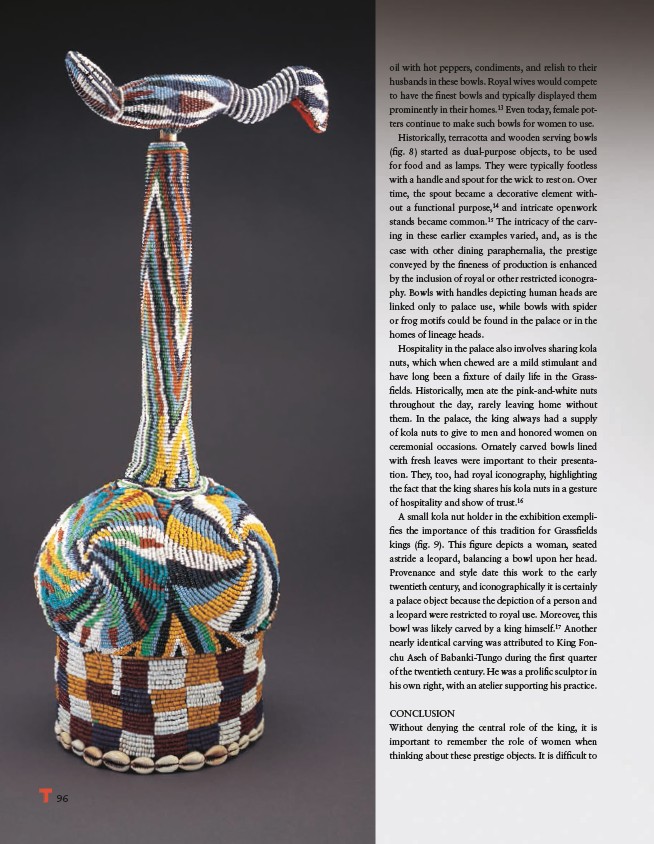
ART ON VIEW
96
oil with hot peppers, condiments, and relish to their
husbands in these bowls. Royal wives would compete
to have the fi nest bowls and typically displayed them
prominently in their homes.13 Even today, female potters
continue to make such bowls for women to use.
Historically, terracotta and wooden serving bowls
(fi g. 8) started as dual-purpose objects, to be used
for food and as lamps. They were typically footless
with a handle and spout for the wick to rest on. Over
time, the spout became a decorative element without
a functional purpose,14 and intricate openwork
stands became common.15 The intricacy of the carving
in these earlier examples varied, and, as is the
case with other dining paraphernalia, the prestige
conveyed by the fi neness of production is enhanced
by the inclusion of royal or other restricted iconography.
Bowls with handles depicting human heads are
linked only to palace use, while bowls with spider
or frog motifs could be found in the palace or in the
homes of lineage heads.
Hospitality in the palace also involves sharing kola
nuts, which when chewed are a mild stimulant and
have long been a fi xture of daily life in the Grassfi
elds. Historically, men ate the pink-and-white nuts
throughout the day, rarely leaving home without
them. In the palace, the king always had a supply
of kola nuts to give to men and honored women on
ceremonial occasions. Ornately carved bowls lined
with fresh leaves were important to their presentation.
They, too, had royal iconography, highlighting
the fact that the king shares his kola nuts in a gesture
of hospitality and show of trust.16
A small kola nut holder in the exhibition exemplifi
es the importance of this tradition for Grassfi elds
kings (fi g. 9). This fi gure depicts a woman, seated
astride a leopard, balancing a bowl upon her head.
Provenance and style date this work to the early
twentieth century, and iconographically it is certainly
a palace object because the depiction of a person and
a leopard were restricted to royal use. Moreover, this
bowl was likely carved by a king himself.17 Another
nearly identical carving was attributed to King Fonchu
Aseh of Babanki-Tungo during the fi rst quarter
of the twentieth century. He was a prolifi c sculptor in
his own right, with an atelier supporting his practice.
CONCLUSION
Without denying the central role of the king, it is
important to remember the role of women when
thinking about these prestige objects. It is diffi cult to